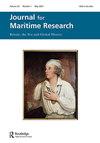马群穿越印度洋,约1800-1918年
Q3 Arts and Humanities
引用次数: 0
摘要
马科动物是这一时期穿越印度洋的主要动物。在内燃机普及之前,战争、农业地产和城市交通推动了需求。由于阿富汗人切断了陆路来源,英属印度是主要市场,其次是拥有大量种植园的岛屿,特别是毛里求斯、卢旺达和爪哇。澳大利亚和南美是主要的供应国,来自西方的供应很少。尽管陪同动物进行海上旅行的人类的第一手资料令人惊讶地罕见,但许多证据仍然存在。恶劣的条件,类似于被奴役的非洲人的“中间通道”,是由军事紧急情况、销售截止日期、压缩成本的压力、冒险和船上人员的个人缺陷造成的。然而,工作的马到达时的货币价值取决于它们的生存和身体状况,有些人对他们照顾的动物很友善。尽管对动物来说,旅行总是充满压力和痛苦的经历,但发病率和死亡率慢慢下降了。食物、水、稻草、通风、照明、身体和兽医护理的供应逐渐改善。19世纪80年代初见证了两项重大创新,更好的装卸设施,以及专门装备的轮船的引入。本文章由计算机程序翻译,如有差异,请以英文原文为准。
Equids across the Indian Ocean, c. 1800–1918
ABSTRACT Equids were the main animals transported across the Indian Ocean in this period. Prior to the spread of the internal combustion engine, warfare, agricultural estates, and urban transport drove demand. British India, cut off from overland sources by the Afghans, was the main market, followed by islands with large plantation sectors, notably Mauritius, Réunion, and Java. Australia and South America were the chief suppliers, with few coming from the West. Although first-hand accounts by humans who accompanied animals on their maritime journeys are surprisingly rare, much evidence survives. Harsh conditions, akin to the ‘middle passage’ of enslaved Africans, resulted from military emergencies, marketing deadlines, pressures to compress costs, taking chances, and personal defects among the personnel on ships. However, the monetary value of working equids on arrival depended on their survival and physical state, and some humans were kindly disposed towards the creatures in their care. Although journeys were always a stressful and trying experience for animals, rates of morbidity and mortality slowly fell. The provision of food, water, straw, ventilation, light, and bodily and veterinary care gradually improved. And the early 1880s witnessed two major innovations, better loading and unloading facilities, and the introduction of specially equipped steamers.
求助全文
通过发布文献求助,成功后即可免费获取论文全文。
去求助
来源期刊

Journal for Maritime Research
Arts and Humanities-History
自引率
0.00%
发文量
0
期刊介绍:
The Journal for Maritime Research ( JMR ), established by the National Maritime Museum in 1999, focuses on historical enquiry at the intersections of maritime, British and global history. It champions a wide spectrum of innovative research on the maritime past. While the Journal has a particular focus on the British experience, it positions this within broad oceanic and international contexts, encouraging comparative perspectives and interdisciplinary approaches. The journal publishes research essays and reviews around 15-20 new books each year across a broad spectrum of maritime history. All research articles published in this journal undergo rigorous peer review, involving initial editor screening and independent assessment, normally by two anonymous referees.
 求助内容:
求助内容: 应助结果提醒方式:
应助结果提醒方式:


